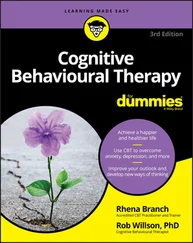Church history buffs: Turn to Chapter 6for the lowdown on what kind of teachings you can expect to come from the pope. Suffice it to say that the Church has a responsibility to its members to make sense out of the faith, and the Ordinary and Extraordinary Magisteria help Catholics get the word straight from the Vatican’s mouth.
The kingly office: Shepherding and governing through the hierarchy
Christ the King provided governance and leadership to his followers. The kingly office of the Church is to make sure that the Church stays organized with the right people in charge, just like Jesus set it up. The Catholic Church is an institution, and as with any organization, it has rules, procedures, and a hierarchy of authority.
The basic structure of the Church was given by the Lord when He formed His Church by calling the Twelve Apostles, who became the first bishops. Out of the 12, he chose a leader, Peter, the first pope (flip to the earlier section “ Establishing a Foundation: Built on Rock” for more details). That’s still the example the Church follows.
Bishops and presbyters or priests (successors to the 70 disciples) are ordained to celebrate the sacraments (especially the Mass), to preach, to teach, and to minister in a local church (known as a parish ). A collection of parishes in a geographical location is known as a diocese. The Catholic Church is made up of many different dioceses and archdioceses throughout the world. An archdiocese is a diocese than has the most people in relation to the other dioceses in that particular region. It is not per se the largest geographical territory, but it is the most populous and usually the most historical in that state or region. For example, the Archdiocese of Philadelphia is the largest diocese in Pennsylvania. The other (and smaller) seven dioceses (Harrisburg, Erie, Pittsburgh, Scranton, Greensburg, Altoona-Johnstown, and Allentown) are called “suffragan” while Philadelphia is the Metropolitan Archdiocese. In addition to priests, there are ordained deacons who assist priests and bishops in their local parishes and dioceses.
The pope is the head of the Church and the bishop of Rome; as such, his seat of authority (cathedra) is the Basilica of St. John Lateran. He is also the head of the Universal Church, and his seat of authority is the Basilica of St. Peter, Vatican City. Cardinals are appointed by the pope and make up the College of Cardinals. As a body, this college advises the pope and, on his death, elects a new pope.
Because the structure of the Catholic Church is such a complex subject, we devote an entire chapter of this book to the subject: Chapter 6. For the whole scoop on the many people and departments that carry on the work of Christ’s kingly office, be sure to check out that chapter.
Membership Has Its Benefits
An old axiom states that the whole is greater than the sum of the parts. Belonging to the Church — being a member of the Mystical Body of Christ — has benefits beyond the imagination. Scripture says that eye has not seen and ear has not heard what God has in store for us (1 Corinthians 2:9). While we may not be able to comprehend fully what total union with God fully means, because we are united together as brothers and sisters, our joy will be more full and intense than if we were all by ourselves.
Although the Church is sometimes called the societas perfecta (perfect society), members of the Catholic Church are not in any way perfect or sinless. They are not better than people who do not belong to the Church. Instead, the phrase means that the Church is the source of all necessary divine truth and of all necessary divine grace. It’s one-stop spiritual shopping, you could say.
The Church provides for all the spiritual needs of a believer. For spiritual food, there is Holy Communion (also called the Holy Eucharist). For knowledge, there is divine revelation as found in Sacred Scripture and Sacred Tradition, entrusted to the Magisterium (teaching authority of the Church). For spiritual healing, there is the sacrament of Penance and Reconciliation, as well as the sacrament of Anointing the Sick. The Church hierarchy provides necessary leadership, and canon law is the source of justice and discipline. The needs of the individual and the needs of the community are perfectly fulfilled, meaning that members do not need to go anywhere else to fulfill their spiritual requirements.
 If all this sounds pretty good to you, and you’re not yet a baptized Catholic, we encourage you to check out your local parish’s RCIA (Rite of Christian Initiation of Adults) process. It’ll give you ample opportunity to learn more about the faith, help find a sponsor for the sacraments of Baptism and Confirmation, and perform all the necessary rites so you can officially join the Church. The process usually takes about nine months, from early fall to spring (Easter), but in some cases can be done privately as well. Baptized Protestants aren’t re-baptized, but after instruction are brought into full communion by professing the faith, going to confession, being confirmed, and then receiving their First Communion. Only unbaptized persons can be baptized.
If all this sounds pretty good to you, and you’re not yet a baptized Catholic, we encourage you to check out your local parish’s RCIA (Rite of Christian Initiation of Adults) process. It’ll give you ample opportunity to learn more about the faith, help find a sponsor for the sacraments of Baptism and Confirmation, and perform all the necessary rites so you can officially join the Church. The process usually takes about nine months, from early fall to spring (Easter), but in some cases can be done privately as well. Baptized Protestants aren’t re-baptized, but after instruction are brought into full communion by professing the faith, going to confession, being confirmed, and then receiving their First Communion. Only unbaptized persons can be baptized.
Chapter 6
IN THIS CHAPTER
 Looking at the Church’s hierarchy
Looking at the Church’s hierarchy
 Finding out about papal elections in the Vatican
Finding out about papal elections in the Vatican
 Discovering the long line of papal succession
Discovering the long line of papal succession
 Understanding the duties of the clergy
Understanding the duties of the clergy
Chain of command: Every structured environment has one — from governments to corporations to schools to sports programs. The Catholic Church is no exception. This chapter explains who’s who in the Catholic Church and gives you a glimpse into the authority and duties of its various members. Check out Table 6-1for a quick look at who’s in charge, from highest to lowest (top to bottom) in terms of rank.
TABLE 6-1The Catholic Church Chain of Command
| Clergy Members’ Titles |
What They Do |
| The pope |
He’s the bishop of Rome and the head of the whole Church. |
| Cardinals |
They elect the pope and work in different departments as his right-hand men. |
| Bishops and archbishops |
They take charge of the churches in their respective geographical areas, called dioceses. |
| Vicar generals |
They are priests who help the bishop govern the local churches. |
| Parish priests, or pastors |
They take care of all the big day-to-day duties in their churches, from leading Mass to hearing confessions. |
| Monks and nuns |
They choose to live together, work together, and spend many hours devoted in prayer. |
Best known throughout the world and among more than 1 billion Catholics as the pope, the bishop of Rome is the supreme and visible head of the Catholic Church. The word pope is actually an English translation of the Italian il Papa, meaning “father,” which leads you to another title for the pope — Holy Father. Just as a Catholic priest is called “Father” in a spiritual sense, the pope is called “Holy Father” by Catholics all over the world.
Читать дальше

 If all this sounds pretty good to you, and you’re not yet a baptized Catholic, we encourage you to check out your local parish’s RCIA (Rite of Christian Initiation of Adults) process. It’ll give you ample opportunity to learn more about the faith, help find a sponsor for the sacraments of Baptism and Confirmation, and perform all the necessary rites so you can officially join the Church. The process usually takes about nine months, from early fall to spring (Easter), but in some cases can be done privately as well. Baptized Protestants aren’t re-baptized, but after instruction are brought into full communion by professing the faith, going to confession, being confirmed, and then receiving their First Communion. Only unbaptized persons can be baptized.
If all this sounds pretty good to you, and you’re not yet a baptized Catholic, we encourage you to check out your local parish’s RCIA (Rite of Christian Initiation of Adults) process. It’ll give you ample opportunity to learn more about the faith, help find a sponsor for the sacraments of Baptism and Confirmation, and perform all the necessary rites so you can officially join the Church. The process usually takes about nine months, from early fall to spring (Easter), but in some cases can be done privately as well. Baptized Protestants aren’t re-baptized, but after instruction are brought into full communion by professing the faith, going to confession, being confirmed, and then receiving their First Communion. Only unbaptized persons can be baptized. Looking at the Church’s hierarchy
Looking at the Church’s hierarchy










